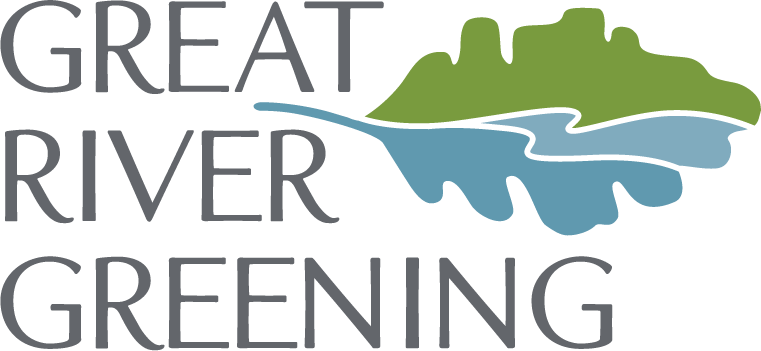Upcycling water bottles into floating islands
Hallett’s Pond Natural Area is a treasured natural resource within St. Peter’s city limits. The 14-acre waterbody is used by the community for outdoor events and recreation, especially fishing. Neighborhood residents appreciate they can walk and bike to it.But a high nutrient load of phosphorous and nitrogen from stormwater feeds summer algal blooms, limits the pond’s food sources for fish, and creates other serious water quality problems.Great River Greening is supporting a city initiative to improve the pond’s water quality by utilizing a cutting edge technology that transforms plastic water bottles into floating islands. These structures mimic floating peat bogs—wetland habitat often found on Minnesota lakes that naturally filters phosphorous and nitrogen.This spring, 50 Great River Greening volunteers will build three of these islands for the pond.Susie Carlin, Watershed Coordinator for Great River Greening, said "the city was interested in this exciting new technology that mimics a natural process to improve water quality while also providing great aquatic habitat for fish. Great River Greening was able to provide the resources and expertise to make it happen."Carlin added, "we’re starting small, so the the improvement to water quality may be marginal, but they will add important wetland habitat right into the middle of the water column, where plants are usually not able to reach excess nutrients. We do anticipate a big impact on habitat; both terrestrial, on the islands for insects and birds, and aquatic, particularly fish."The islands are good example of upcycling, where waste material is transformed into more valuable, new material. A matrix of recycled, BPA-free plastic is injected with marine-grade foam for buoyancy. Native wetland vegetation will be planted in the structure, allowing the roots to filter the water and provide habitat for fish and other aquatic organisms.An added benefit: Each 100 square feet of these man made islands keep 3,000 bottles out of landfills.The maker of the structures, Bio Haven, says the "islands are constructed from a matrix of non-woven PET plastic fibers derived from BPA free recycled plastic drinking bottles, which is inert, won’t biologically degrade and will not leach, which is why it is widely preferred for packaging foods. PET is also inherently more UV resistant than other plastics, like polypropylene, because of its molecular structure.”The volunteer event at Hallett’s Pond will take place May 18, 9:00 am - 1:00 pm. Volunteers will build the islands, and plant native grasses and shrubs on the shoreline of the pond.
Project partners and funders: FishAmerica Foundation, City of Saint Peter, CHS Foundation, Clif Bar Family Foundation, New Belgium Brewing, Rahr Corporation, and Fréy Salon.

